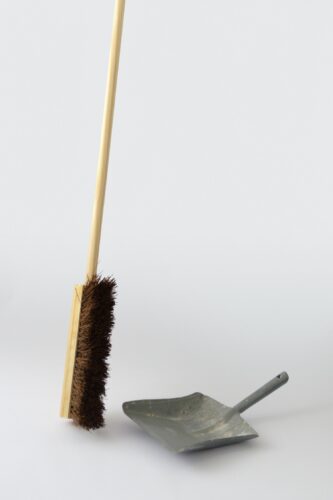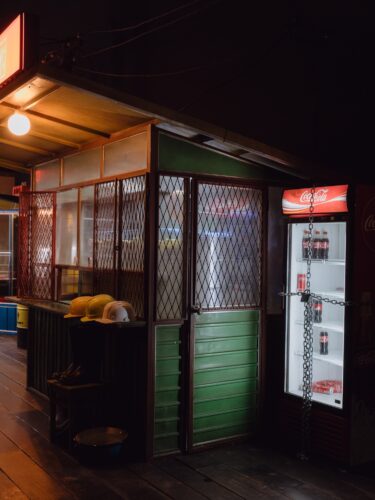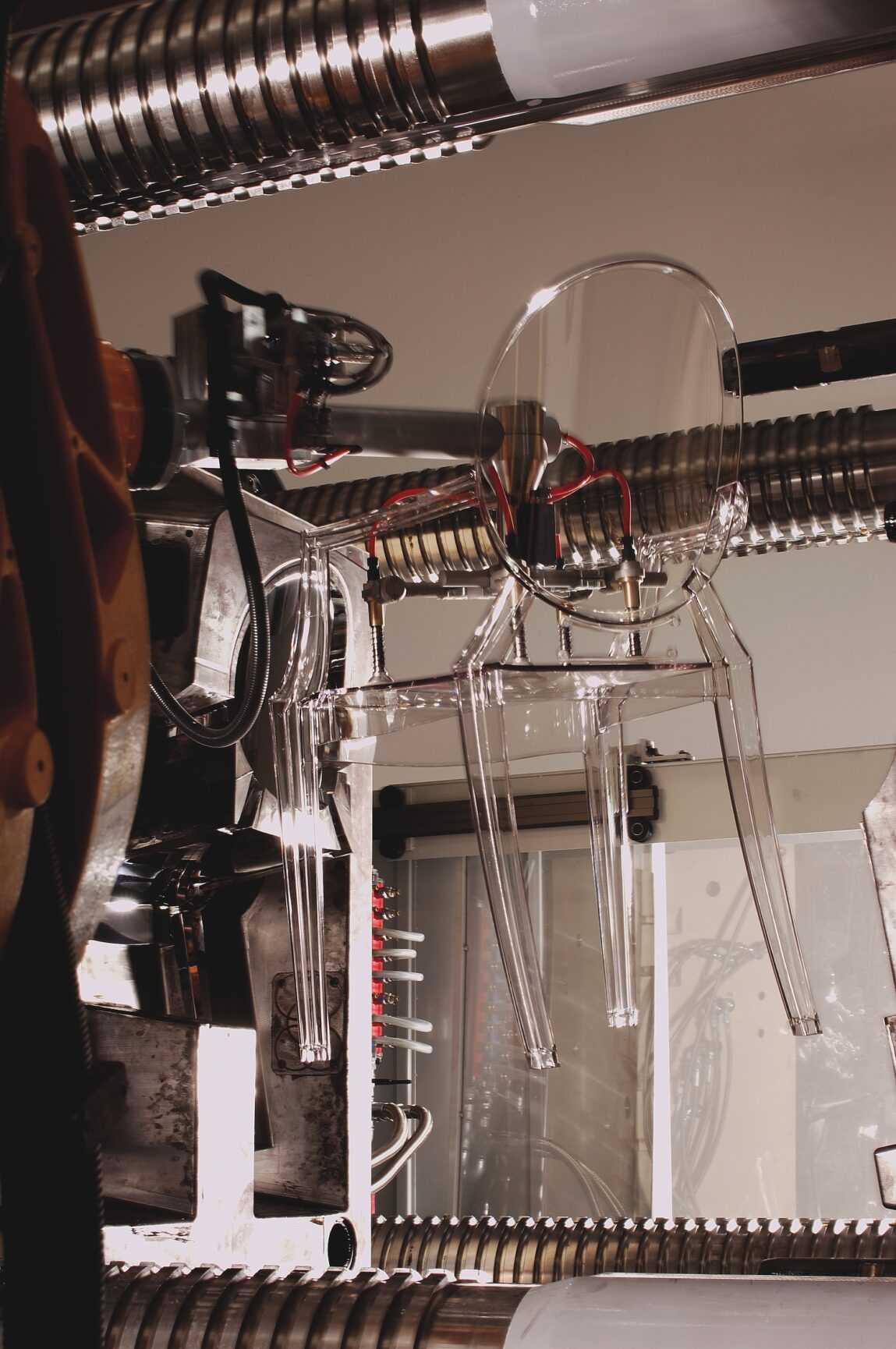Text Andreas K. Vetter
We can’t do anything without things, things make us. That is the condition of life. Objects shape our lives and our identity on the most diverse levels and in many ways that are often difficult to grasp. The interaction between creatives and objects is and remains particularly interesting. What follows are reflections on the »thing« as a central motif and the people who create it and work with it, whether in the fields of architecture, design or art.
Somehow, a thing is always something individual and usable. Unlike the well-known formulation in relation to Genesis, which speaks of the »creation of all things« and thus refers to the beginning of the world, we do not also understand the thing as a living being such as a tree and an animal or as a component of the environment such as a mountain and a road. For us, a thing is ultimately always a separate entity which, if it is human-made, also has a function and becomes an object within our formation of reality. Consequently, »the thing« always refers to us as humans, because if we do not perceive something in this way, then there is no thing. A stone is just lying around. But if it is used to hold a door open, then it suddenly becomes relevant: »That thing there.« Exciting, isn’t it?
Such insights are ancient. Philosophy developed realism for debates about things and concepts, and the scholastic Middle Ages, for example, discussed the question of whether a table only becomes a table because it has this designation. What would it be otherwise? In any case, all of this makes it clear that things are part of our lives, that we make or define them, use them and also understand them as having value. However, the symbolic quality is particularly appealing: no queen without a crown, no judge without a robe. No chancellor without a bottle of beer, one could add—let’s remember Gerhard Schröder’s famous saying. As clichéd as it sounds, it has a factual meaning. In fact, these symbolic objects were introduced to signal power or competence, but also to make it easier for us to accept abstract qualifications: »Whoever wears the hat is in charge.«

Villa Savoye in Poissy, 1887-1965
When the Swiss architect and co-founder of classical modernism Le Corbusier (1887-1965) was ready to have his famous Villa Savoye in Poissy documented with the black and white photographs that were common at the time after its completion and he looked through the prints he had just made, he noticed a small deficit. He immediately asked his photographer Marius Gravot to place a few things in the foreground of a shot of the famous sun terrace on the roof of the villa. Apparently, the other images, taken in an objective, modern style, had become too impersonal. In these, the house appeared basically deserted and sterile, which made its architectural conception clear and legible, but in no way corresponded to the reality of its use. And what did Marius Gravot place in his picture? Just the insignia of the architect: Glasses, hat, cigarettes. As if Le Corbusier had just stood behind us on the roof parapet for a moment and was about to return to his personal paraphernalia. A clever trick that plays with the presence of what is not shown, without jeopardizing the documentary task of architectural photography with a distracting person in the picture. As viewers, we decide what we concentrate on—and thus ultimately what the message of the picture is. A second layer of content is created solely through these four objects.
Philippe Starck, born in Paris in 1949, is a fan of old styles, especially the French royal court in the Baroque period. Reflections of Louis-seize, or Rococo, can be found time and again in his work. However, to make it less obvious that this star designer, who can also appear unconventional with a motorcycle, tracksuit jacket or costume, loves the »old-fashioned«, he developed a camouflage solution for a Kartell series chair in 2002: he made it transparent and called it Louis Ghost. It is now up to those who buy it to consciously sit on a piece of stylish furniture, or to overlook its formally expressed »meta-level« and just use it as a simple plastic chair—chacun à son goût. For Starck, design also involves play, and this creates a special kind of communication. It would be tempting to assume that the Frenchman was familiar with the »Ten Theses for Good Design« by his German colleague Dieter Rams. The well-behaved Rams with his neat designs—for Braun or FSB, for example—calls for: »Good design makes a product understandable.« And that’s what appeals to Starck. He doesn’t want you to be able to grasp something completely and immediately »see through it«—although this is indeed the case with a Louis Ghost, visually speaking. However, the versatility of a thing expands its presence.

Philippe Starck for Kartell: »Louis Ghost«, 2002
A third aspect: anyone who approaches things exclusively with a functional reservation—and understands every product of our meritocracy in the same way as Loriot’s famous utility user—overlooks what Greek-born Katerina Kamprani has been thinking through for herself and us for some time. While studying industrial design, she discovered the dysfunctionality that is as much a part of the object as its usability. The utensil, whose name derives from usable, is not bound to the fact that it can be put to good use—the stone mentioned above can also lie in the way instead of holding the door open. Kamprani describes her strategy as follows: »I love surrealism and absurdism. For me, it’s a different way of thinking that is much less strict than logic: it’s not about right or wrong, so the possibilities are limitless.« But your goal always remains a positive one: »I laughed out loud at my own creation! This gave me the idea to actually design objects for a bad user experience, objects that are intentionally uncomfortable.« What a nice way to drive our society to the edge of sanity.

»The Uncomfortable Broom«, Katerina Kamprani, 2017
However, objects are not only characterized by their form and use—they are sometimes also carriers of messages or signifiers for a context of meaning. The visual arts and scenography in particular work with this. Both belong to the professional field of Aleksandar Denić (b. 1963), a Serbian artist working in Germany. As a participant in the 2024 Biennale, he opted for an installation consisting of three objects that become the protagonists of a narrative. How this story is then interpreted when visiting the Serbian Pavilion at the »Exposition Coloniale« depends on individual interpretation and creativity. However, there are unmistakable signals associated with the built objects: The telephone booth painted in the Ukrainian national colors rings from time to time, but without conveying a conversation. The two old oil barrels—positioned flanking it—display two brand identities, namely that of the US oil company Texaco and that of the Russian company Rosneft. We are therefore not so much standing in front of three somewhat old relics, but in a sense in front of a »monument«. Description boards or guided tours are not really necessary: We understand the underlying meaning of things.

»Exposition Coloniale«, installation by Aleksandar Denić for the Serbian Pavilion, Biennale, 2024

»Exposition Coloniale«, installation by Aleksandar Denić for the Serbian Pavilion, Biennale, 2024
Incidentally, there is a genre of art that consists solely of pictures of things that have been set aside: the still life. Of course, they are artfully composed. Kevin Best, the Australian photo artist, is undoubtedly a fan. From a distance, one could immediately place his works in the 17th century Netherlands without hesitation—as long as one thinks of the classic motifs, including the mighty frames around them. However, while a dense approach to historical works disillusions the viewer to the extent that the contours then become coarser, irritatingly impasto, and ultimately no longer dissolve recognizably into a surface of color, this does not happen with Best. Best is a meticulously staged photographer. And so the objects in his still lifes lose neither brilliance nor sharpness, regardless of the distance. We see exactly what has been photographed, as if it were actually in front of us – the cup, the lemon, the carpet. But what about the meanings and stories that are known to have been incorporated into the image at the time? They are still there: »I often weave complex narratives into my work, so I usually start with a single object and add others to develop a story until it is complete«, he reveals about his approach.
Understandable, because we live in the 21st century and read a picture in our own contemporary way. But for us too, the things shown become carriers of a narrative. Michel Foucault already mentioned in his Order of Things that signs »can be based on agreement«. While people in the 17th century loved to recognize representatives in them—for philosophical aspects of life such as transience or the vice of gluttony—we are enthusiastic about the quality of the reproduction or the aesthetic experience. Even if it’s just a glass or a peeled tropical fruit.
However, there is indeed a special quality to one thing or another—it becomes a fetish. This is well described in Tom Wolfe’s (1930—2018) wonderfully ironic book From Bauhaus to our House, which deals with the inescapable influence of modernist design and the Bauhaus aesthetic on the cultural scene in the USA in the 1950s—from Walter Gropius’ architecture to Mies van der Rohe and his furniture designs. »The home of every young architect and the pad of every architecture student«, Wolfe reports, »was this box and this shrine. And in this shrine was always the same icon … the Barcelona chair. … When you saw this sacred object on the sisal rug, you knew you were in a household where a newly fledged architect and his wife had sacrificed everything to place the symbol of the divine mission in their home. Five hundred and fifty dollars!«
Sometimes things get enormously complicated. Especially when they symbolize or communicate something, i.e. have an indirect effect. Let’s take another example: once upon a time, there was an insignificant satellite dish on the flat roof of a store in south-east London. In August 2024, the now world-famous but anonymous street artist Banksy decided to spray paint a black, howling wolf on this very light gray dish. This was immediately publicized in one of his posts and, as always, the art-loving public immediately went into raptures over the cleverly packaged message in Banksy’s graphic. The banal bowl had apparently become an art object—instantaneously. But just one hour after it was seen by the public, a masked man climbed a ladder onto the roof in broad daylight, dismantled it and stole it. But what was it that the petty criminal group simply carried away across the shopping street despite protests from passers-by? A thing, an antenna in any case, at best a satellite dish spray-painted against its usability. Incidentally, it can be assumed that the spray-painting artist had already worked in a mask and damaged something that did not belong to him. So is it just damage to property and removal of garbage? Or is it qualified art theft, or perhaps even a happening? The art world is puzzling over whether it should be outraged. Some say: absolutely!
The series of characteristics of things listed here would also include the fact that they sometimes become personal companions and we can no longer do without a special object, or that they literally represent us as an individual, as a person. What the smartphone has certainly become for many over the last decade has been the coffee and cigarette relaxation set for more than a hundred years. Whether you’re working on a building site or at the operating table, for quite a few people it’s part of their lifestyle. This also applies to the New York-based filmmaker Jim Jarmusch (born 1953). The then fifty-year-old even felt so connected to these two things in his everyday life that he made an episodic film in 2003, which deals with this constellation, including the associated cups, ashtrays and tables, in small stories—always with his typical looseness and subtle humor. And one thing becomes very clear while watching: coffee and cigarettes are things that involve a lot of time, a lot of enjoyment and a lot of discourse—»Coffee, is that cool? … Yeah yeah, OK … Coffee? … Yeah. … OK man.«—even if the latter doesn’t always have to be the smartest at the coffee table with Iggy Pop and Tom Waits. Whatever!
Jim Jarmusch is very aware of the importance of things in our world, and also of the fact that we use them to enhance or stylize our personal appearance. For example, he is usually photographed wearing dark sunglasses, which, in combination with his wild, silver-grey hairstyle, is undoubtedly part of his self-presentation. However—and this may be the last wise insight of this text on the condition of life—sometimes there is also a protective function in the thing: especially with those dark glasses in front of the eyes. Bob Dylan wrote in his 2004 autobiography Chronicles that he often had to arm himself against intrusive curiosity in his songs, which were sometimes simply inspired and created without much thought. Besides, he can’t explain everything in his music. His first thing to reach for is something that has often saved the lives of Jim Jarmusch and many others: »Sometimes you just have to bite your upper lip and put sunglasses on.«
FIRST PUBLISHED IN CHAPTER №XI »TASTEMAKERS« — WINTER 2024/25

